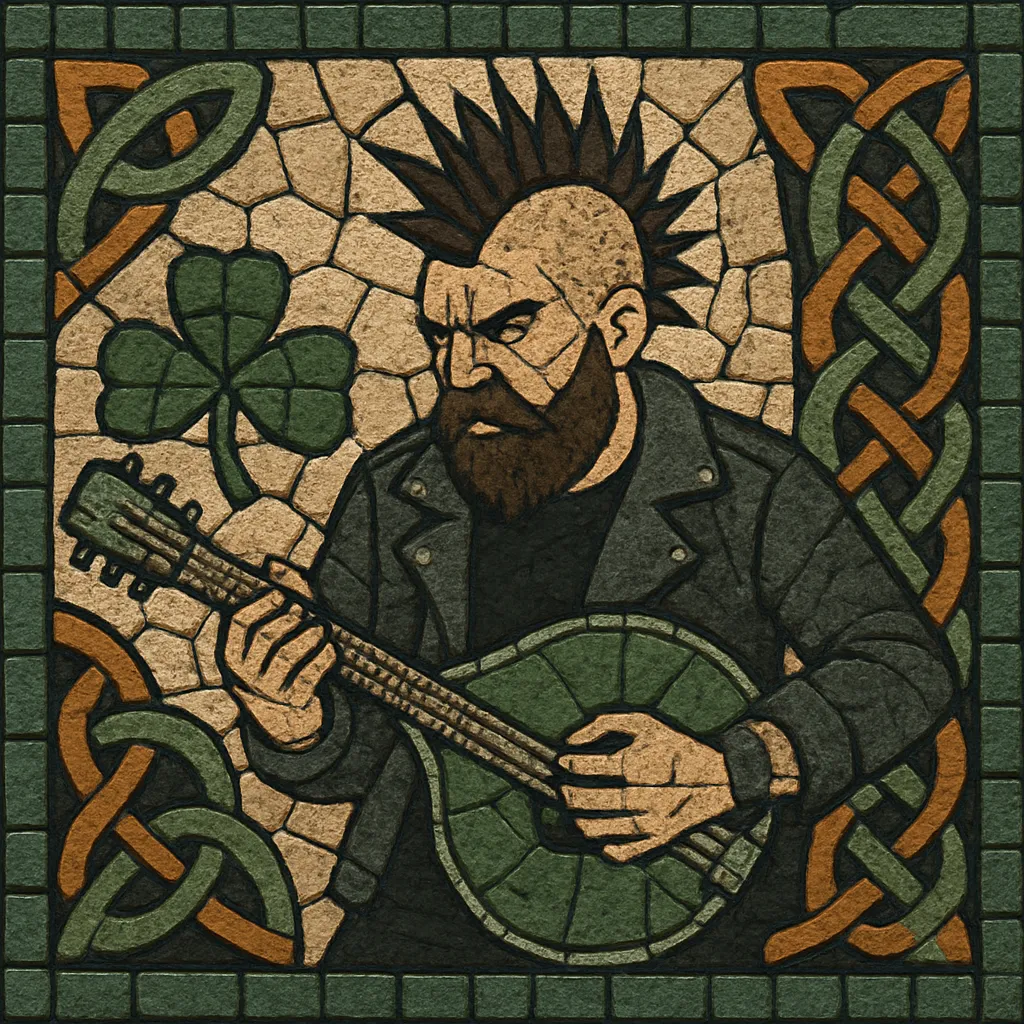
Celtic punk fuses the speed, aggression, and DIY ethos of punk rock with the melodies, modes, and acoustic instrumentation of Celtic folk traditions.
Bands typically combine electric guitar, bass, and drum kits with tin whistle, fiddle, banjo, mandolin, accordion, and bagpipes, delivering an anthemic, pub-ready sound. Lyrically, it often leans into themes of migration, working-class life, rebellion, historical memory, and communal celebration—frequently punctuated by shout-along choruses and gang vocals.
Rhythmically it alternates straight-ahead 4/4 punk drive with reels and jigs (often in 6/8 or 12/8), while harmonically it blends simple I–IV–V punk progressions with modal folk colors (notably Dorian and Mixolydian) and droning fifths reminiscent of traditional piping.
Celtic punk emerged in the mid-1980s in the United Kingdom, most famously through The Pogues, who injected the bite of punk into Irish folk songcraft. Building on the raw, pub-circuit energy of UK punk and the storytelling of traditional Irish music, they popularized a hybrid that balanced acoustic instrumentation with punk’s velocity and attitude.
Through the 1990s, the style took root in diaspora communities—especially in North America. Bands like The Tossers (Chicago) and The Mahones (Canada) adapted the model to local scenes, while Dropkick Murphys (Boston) codified a muscular, working-class variant that foregrounded gang vocals, pipes, and terrace-chant hooks.
Flogging Molly’s widescreen, tour-hardened sound and Dropkick Murphys’ sports culture crossover brought the genre broader visibility. A global wave followed, with The Real McKenzies (Canada), Blood or Whiskey (Ireland), and later The Rumjacks (Australia) and The Dreadnoughts (Canada) contributing regionally inflected approaches.
The style persisted as a festival staple and soundtrack to diaspora identity and sporting culture. While aesthetically stable—fast tempos, acoustic/plugged-in blend, anthemic refrains—modern productions feature tighter low-end, more polished pipe and fiddle capture, and occasional forays into double-time hardcore or folk-metal textures.
Combine a standard punk backline (electric guitar, bass, drums) with Celtic folk instruments—tin whistle, fiddle, banjo, mandolin, accordion, bodhrán, and bagpipes (uilleann or Highland). Let at least one acoustic lead (fiddle/whistle/pipes) carry primary melodies.
Write verses and choruses in tight 4/4 at 140–190 BPM for punk drive. Interleave breakdowns or intros based on jigs/reels (6/8 or 12/8) to spotlight folk instrumentation. Use straight eighths for rhythm guitar; add off-beat accents or staccato snare for dance-like lift.
Keep harmony simple (I–IV–V with occasional vi and bVII). Borrow modal color from Celtic idioms—Dorian and Mixolydian work well—and use pedal fifths to evoke pipe drones. Let melody instruments double or answer vocal lines; feature unison octave hooks for impact.
Write story-driven, communal lyrics: migration, work, solidarity, rebellion, romance, and revelry. Favor punchy, chantable refrains with call-and-response or gang vocals. Slight grit or shout-singing fits the aesthetic.
Structure around verse–pre–chorus–chorus with a folk-tune intro or mid-song reel/jig interlude. Alternate full-band sections with acoustic breaks. End with a double-chorus and instrumental tag featuring the lead folk instrument.
Mic fiddles and whistles carefully to avoid harshness; tame 2–4 kHz on bright sources. Leave headroom for pipes and gang vocals. Double rhythm guitars, pan wide; center kick/snare/bass/vocal. If switching meters (4/4 to 6/8), tempo-map the session and use count-in pickups to keep transitions tight.

